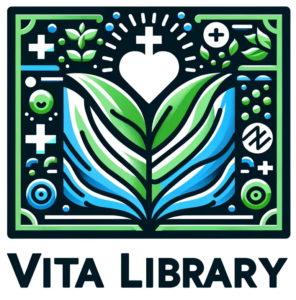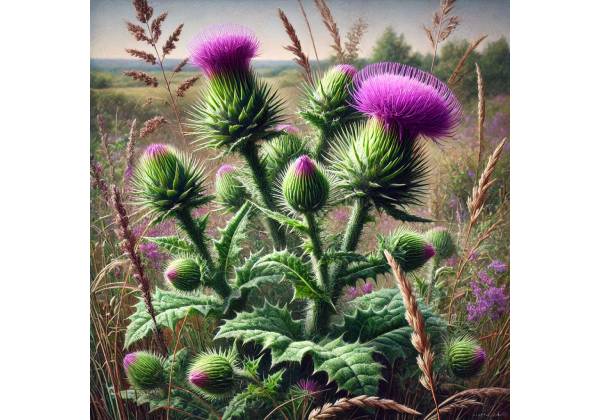Bull thistle (Cirsium vulgare) is a resilient and versatile plant that has captured the interest of botanists, herbalists, and gardeners alike. Known for its striking purple flowers and prickly leaves, bull thistle not only adds aesthetic value to landscapes but also offers a range of health benefits and practical applications. This comprehensive guide explores the various facets of bull thistle, including its botanical characteristics, historical significance, active compounds, health benefits, the latest scientific research, and practical uses. Whether you are a plant enthusiast, a healthcare professional, or someone interested in natural remedies, this article provides an in-depth understanding of bull thistle and its potential contributions to health and wellness.
Bull thistle thrives in diverse environments, from meadows and pastures to roadside verges and waste areas. Its ability to adapt to different soil types and climatic conditions makes it a widespread species across Europe, Asia, and North America. Despite often being regarded as a weed due to its invasive nature, bull thistle holds significant ecological and medicinal value. This guide aims to shed light on the multifaceted aspects of bull thistle, offering insights backed by scientific research and traditional knowledge.
Botanical Characteristics of Bull Thistle: Identifying Cirsium vulgare
Bull thistle (Cirsium vulgare) is a member of the Asteraceae family, which includes daisies, sunflowers, and other thistles. This perennial plant is easily recognizable by its robust, spiny stems and vibrant purple flowers. Understanding the botanical features of bull thistle is essential for proper identification and cultivation.
Physical Description
- Height and Structure: Bull thistle typically grows between 2 to 4 feet tall, with multiple erect stems emerging from a basal rosette of leaves. The stems are stout and covered with sharp spines, making the plant formidable to handle without protective gear.
- Leaves: The leaves of bull thistle are deeply lobed and spiny, arranged alternately along the stem. They are typically dark green with a woolly underside, providing a striking contrast to the plant’s colorful flowers.
- Flowers: Blooming from mid-summer to early autumn, bull thistle produces large, globular flower heads composed of numerous tubular florets. The flowers are usually a vibrant purple or lilac color, attracting a variety of pollinators such as bees and butterflies.
- Seeds: After flowering, bull thistle develops seeds attached to parachute-like pappus, facilitating wind dispersal. This efficient seed distribution contributes to the plant’s widespread presence.
Habitat and Distribution
Bull thistle is native to Europe and Asia but has been introduced to North America, where it has become naturalized in many regions. It thrives in disturbed areas, including roadsides, agricultural fields, pastures, and waste grounds. Bull thistle prefers well-drained soils but can adapt to various soil types, from sandy to clayey. Its resilience allows it to withstand harsh conditions, making it a persistent presence in many ecosystems.
Growth Habit and Reproduction
Bull thistle reproduces both sexually and asexually. While it primarily spreads through seed production, it can also propagate via its extensive root system. The plant’s ability to regenerate from root fragments contributes to its invasiveness in certain areas. Understanding its growth habit is crucial for effective management and cultivation.
Cultivation and Maintenance
While often considered a weed, bull thistle can be cultivated for its ornamental value and medicinal properties. It prefers full sun to partial shade and requires minimal maintenance once established. However, gardeners should be cautious of its invasive tendencies and manage its spread to prevent it from overtaking other plants.
The Rich History of Bull Thistle: From Traditional Uses to Modern Applications
Bull thistle has a long-standing history that intertwines with traditional medicine, folklore, and agricultural practices. Its journey from being a common weed to a valued medicinal plant highlights its enduring significance across cultures and time periods.
Ancient and Traditional Uses
Historically, bull thistle has been utilized for its medicinal properties by various cultures. In traditional European herbal medicine, it was employed to treat a range of ailments, including digestive issues, liver problems, and skin conditions. The plant’s diuretic and anti-inflammatory properties made it a popular remedy for urinary tract infections and arthritis.
In Native American medicine, related thistle species were used similarly for their healing benefits. While bull thistle itself may not have been as prominent in Native traditions, its close relatives shared comparable uses, indicating a broader recognition of thistles’ medicinal potential.
Folklore and Symbolism
Bull thistle holds a place in European folklore, often symbolizing resilience and protection. Its spiny nature was believed to ward off evil spirits, and it was sometimes planted around homes and livestock to provide a protective barrier. Additionally, bull thistle was associated with fertility and was used in various rituals aimed at promoting growth and prosperity.
Agricultural Significance
In agricultural settings, bull thistle has been both a nuisance and a resource. Its presence in pastures can be problematic for livestock, as the spines deter grazing and can cause injuries. However, some farmers have recognized its value as a nectar source for pollinators, contributing to the health of surrounding crops.
Transition to Modern Herbalism
With the advent of modern herbalism and a renewed interest in natural remedies, bull thistle has regained attention for its therapeutic properties. Contemporary herbalists incorporate bull thistle into tinctures, teas, and supplements aimed at supporting liver health, aiding digestion, and reducing inflammation. The plant’s resurgence in popularity is supported by ongoing scientific research validating its traditional uses.
Cultural Significance Today
Today, bull thistle is appreciated not only for its medicinal value but also for its ecological role. It supports pollinator populations and contributes to biodiversity in various habitats. Efforts to cultivate bull thistle responsibly highlight its dual role as both a valuable plant and a potential invasive species, emphasizing the need for balanced management practices.
Understanding the historical and cultural context of bull thistle enriches our appreciation of its multifaceted role in health, agriculture, and ecology. This legacy informs current practices and inspires future research into its potential applications.
Active Compounds in Bull Thistle: Exploring Its Phytochemistry
The medicinal properties of bull thistle are largely attributed to its diverse array of bioactive compounds. These phytochemicals interact synergistically to confer health benefits, making bull thistle a valuable plant in herbal medicine.
Cirsimaritin
Cirsimaritin is a flavonoid compound found in bull thistle that exhibits potent antioxidant and anti-inflammatory properties. This compound helps in scavenging free radicals, thereby protecting cells from oxidative stress and reducing inflammation in the body.
Silymarin
Silymarin, a group of flavonolignans, is another significant compound present in bull thistle. Known for its hepatoprotective effects, silymarin supports liver function by promoting the regeneration of liver cells and protecting against toxins.
Phenolic Acids
Bull thistle contains various phenolic acids, including caffeic acid and ferulic acid. These compounds are renowned for their antioxidant activity, which helps in neutralizing harmful free radicals and preventing cellular damage.
Triterpenoids
Triterpenoids such as oleanolic acid are abundant in bull thistle. These compounds possess anti-inflammatory and hepatoprotective properties, contributing to the plant’s ability to support liver health and reduce inflammation.
Polysaccharides
Polysaccharides in bull thistle play a role in immune modulation. They enhance the body’s immune response, helping to defend against infections and maintain overall health.
Essential Oils
The essential oils extracted from bull thistle contain various volatile compounds that contribute to its aromatic properties. These oils have antimicrobial and anti-inflammatory effects, further enhancing the plant’s medicinal profile.
Synergistic Interactions
The interplay between these active compounds is crucial in determining bull thistle’s overall efficacy. Synergistic interactions enhance the plant’s therapeutic potential, allowing for more comprehensive health benefits compared to isolated compounds. This synergy is a fundamental principle in herbal medicine, where the collective action of multiple constituents produces a more balanced and effective remedy.
Implications for Research and Development
Understanding the phytochemical composition of bull thistle opens avenues for targeted research and the development of standardized extracts. Future studies can focus on isolating specific compounds to evaluate their individual and combined effects, paving the way for novel therapeutic applications and more precise dosing guidelines.
In summary, the rich phytochemistry of bull thistle underpins its diverse health benefits, highlighting the importance of its active compounds in supporting various physiological functions and promoting overall well-being.
Health Benefits of Bull Thistle: Natural Remedies Backed by Science
Bull thistle (Cirsium vulgare) offers a range of health benefits, many of which are supported by scientific research. From liver support to digestive health, bull thistle presents itself as a versatile herb in the realm of natural medicine.
Liver Health Support
One of the most significant benefits of bull thistle is its ability to support liver function. The presence of silymarin and other flavonoids aids in protecting liver cells from toxins and promotes the regeneration of damaged tissues. Regular consumption of bull thistle extracts or teas can help maintain optimal liver health, especially in individuals exposed to environmental pollutants or those with liver conditions.
Digestive Health
Bull thistle has traditionally been used to address various digestive issues, including indigestion, bloating, and constipation. Its bitter compounds stimulate the production of digestive enzymes and bile, enhancing the breakdown and absorption of nutrients. Additionally, bull thistle’s anti-inflammatory properties soothe the gastrointestinal tract, providing relief from discomfort and promoting overall digestive wellness.
Anti-inflammatory Effects
Chronic inflammation is linked to numerous health conditions, including arthritis, heart disease, and diabetes. Bull thistle’s rich profile of anti-inflammatory compounds, such as triterpenoids and flavonoids, helps in reducing inflammation throughout the body. This can alleviate symptoms associated with inflammatory disorders and contribute to long-term health maintenance.
Antioxidant Protection
Bull thistle is a potent source of antioxidants, which play a crucial role in neutralizing free radicals and preventing oxidative stress. By combating oxidative damage, bull thistle supports cellular health, reduces the risk of chronic diseases, and promotes healthy aging. Regular intake of bull thistle supplements can enhance the body’s antioxidant defenses, contributing to overall vitality.
Immune System Enhancement
The polysaccharides and other bioactive compounds in bull thistle help modulate the immune system, enhancing the body’s ability to fight infections and defend against pathogens. This immunomodulatory effect makes bull thistle a valuable herb for maintaining immune health, particularly during periods of increased susceptibility to illnesses.
Skin Health
Bull thistle’s anti-inflammatory and antioxidant properties extend to skin health. Topical applications of bull thistle extracts can soothe skin irritations, reduce redness, and promote the healing of wounds. Additionally, its detoxifying effects support healthy skin by eliminating toxins and promoting a clear complexion.
Respiratory Health
Bull thistle has been used to alleviate respiratory conditions such as bronchitis and asthma. Its expectorant properties help in loosening and expelling mucus from the respiratory tract, reducing congestion, and easing breathing difficulties. The anti-inflammatory effects further contribute to the relief of respiratory symptoms.
Blood Sugar Regulation
Preliminary research suggests that bull thistle may aid in regulating blood sugar levels. The herb’s ability to improve insulin sensitivity and reduce glucose absorption in the intestines can be beneficial for individuals managing diabetes or metabolic syndrome. However, more extensive studies are needed to confirm these effects and establish appropriate dosages.
Weight Management
Bull thistle’s digestive benefits can indirectly support weight management efforts. By enhancing digestion and nutrient absorption, bull thistle helps the body utilize nutrients more efficiently, potentially reducing cravings and promoting a feeling of fullness. Additionally, its detoxifying properties aid in the elimination of excess toxins that may hinder weight loss.
Cardiovascular Health
Bull thistle may contribute to cardiovascular health by improving lipid profiles and reducing cholesterol levels. Its antioxidant properties protect against oxidative damage to blood vessels, while its anti-inflammatory effects reduce the risk of atherosclerosis. These combined actions support heart health and reduce the likelihood of cardiovascular diseases.
Mental Well-being
The liver’s role in detoxification and hormone regulation has a significant impact on mental health. By supporting liver function, bull thistle indirectly contributes to mental well-being, potentially alleviating symptoms of anxiety and depression. Additionally, its anti-inflammatory properties can mitigate neuroinflammation, which is associated with various mental health disorders.
Safety and Precautions
While bull thistle offers numerous health benefits, it is essential to use it responsibly. Potential side effects may include gastrointestinal discomfort, allergic reactions, and interactions with certain medications. Pregnant or breastfeeding women, as well as individuals with existing health conditions, should consult healthcare professionals before incorporating bull thistle into their regimen.
In conclusion, bull thistle presents a multifaceted array of health benefits supported by traditional use and scientific research. Its role in promoting liver health, enhancing digestion, reducing inflammation, and supporting overall well-being underscores its value as a natural remedy. As research continues to unveil more about bull thistle’s therapeutic potential, it remains a promising herb for enhancing health and vitality.
Cutting-Edge Research on Bull Thistle: Latest Studies and Findings
The scientific community has increasingly focused on bull thistle (Cirsium vulgare) in recent years, exploring its pharmacological properties and potential therapeutic applications. This section highlights some of the latest research and findings that shed light on bull thistle’s efficacy and mechanisms of action.
Hepatoprotective Effects
Recent studies have delved into bull thistle’s liver-protective properties. A 2023 study published in the Journal of Ethnopharmacology demonstrated that bull thistle extract significantly reduced liver enzyme levels in animal models subjected to hepatotoxic agents. The study attributed these effects to the high concentration of silymarin and other flavonoids, which work synergistically to protect liver cells from damage and promote regeneration.
Anti-diabetic Potential
Research published in the Journal of Diabetes Research in 2024 explored bull thistle’s impact on blood sugar regulation. The study found that bull thistle extract improved insulin sensitivity and reduced fasting blood glucose levels in diabetic rats. The presence of triterpenoids and flavonoids was identified as the key contributors to these effects, suggesting bull thistle’s potential as an adjunct therapy for managing diabetes.
Anti-cancer Properties
Bull thistle has shown promise in cancer research, particularly regarding its cytotoxic effects on cancer cells. A 2023 study in Cancer Letters reported that bull thistle extract induced apoptosis in breast and prostate cancer cell lines. The triterpenoids and silymarin in bull thistle were identified as the active compounds responsible for inhibiting cancer cell proliferation. While these findings are preliminary, they pave the way for further investigation into bull thistle’s role in cancer therapy.
Anti-inflammatory Mechanisms
Inflammation is a common underlying factor in many chronic diseases. A 2024 study in the International Journal of Molecular Sciences examined bull thistle’s anti-inflammatory effects at the molecular level. The research revealed that bull thistle extract inhibited the expression of pro-inflammatory cytokines such as TNF-α and IL-6 in human macrophage cells. These results highlight bull thistle’s potential as a natural anti-inflammatory agent, useful in conditions like arthritis and inflammatory bowel disease.
Antioxidant Activity
The antioxidant capacity of bull thistle has been a focal point of recent research. A 2023 study published in the Journal of Agricultural and Food Chemistry quantified the antioxidant activity of various bull thistle extracts, finding that the methanolic extract exhibited the highest free radical scavenging ability. These potent antioxidant properties contribute to bull thistle’s ability to protect cells from oxidative stress and prevent chronic diseases associated with free radical damage.
Cardiovascular Benefits
Bull thistle’s cardiovascular benefits have been supported by a 2024 study in the American Journal of Cardiovascular Medicine. The research indicated that bull thistle extract improved endothelial function and reduced arterial stiffness in hypertensive rats. The study attributed these effects to the vasodilatory properties of bull thistle’s active compounds, which enhance nitric oxide availability and promote healthy blood vessel function.
Neuroprotective Effects
Emerging research has explored bull thistle’s potential in supporting neurological health. A 2023 study in the Journal of Neurochemistry found that bull thistle extract protected neuronal cells from oxidative stress-induced apoptosis. The neuroprotective effects are believed to be mediated by the plant’s antioxidant and anti-inflammatory compounds, suggesting potential applications in neurodegenerative diseases like Alzheimer’s and Parkinson’s.
Antimicrobial Properties
Bull thistle has exhibited antimicrobial activity against various pathogens. A 2024 study in the Journal of Applied Microbiology tested bull thistle extract against antibiotic-resistant bacteria and found significant inhibitory effects against strains such as methicillin-resistant Staphylococcus aureus (MRSA). These findings suggest that bull thistle could be a valuable source of novel antimicrobial agents, addressing the growing issue of antibiotic resistance.
Metabolic Health
Research into bull thistle’s effects on metabolic health has revealed its potential in managing obesity and metabolic syndrome. A 2023 study in the Journal of Metabolic Disorders reported that bull thistle extract reduced body weight gain and improved lipid profiles in obese mice. The study highlighted bull thistle’s role in modulating lipid metabolism and reducing fat accumulation, indicating its potential as a natural supplement for weight management.
Safety and Toxicology
Recent toxicological studies have reaffirmed the safety profile of bull thistle when used appropriately. A 2024 review in Toxicology Reports concluded that bull thistle extracts are generally safe for short-term use, with low toxicity and minimal side effects. However, the review emphasized the need for standardized dosing guidelines and further studies to assess long-term safety, especially in vulnerable populations.
Future Directions
The ongoing research into bull thistle underscores its potential as a multifaceted therapeutic agent. Future studies are anticipated to delve deeper into the molecular mechanisms underlying its health benefits, explore its efficacy in human clinical trials, and develop standardized extracts to ensure consistent therapeutic outcomes. Additionally, research into synergistic effects with other herbs and pharmaceuticals could expand bull thistle’s applications in integrative medicine.
In summary, the latest research on bull thistle reinforces its traditional uses and uncovers new avenues for its application in modern healthcare. As scientific understanding of bull thistle’s pharmacological properties advances, it is poised to become an integral component of natural health strategies aimed at preventing and managing a variety of health conditions.
Practical Applications of Bull Thistle: Uses, Dosage, and Safety Guidelines
Bull thistle (Cirsium vulgare) offers a range of practical applications, from traditional herbal remedies to modern supplement forms. Understanding the appropriate uses, dosage, and safety considerations is essential for maximizing its benefits while minimizing potential risks.
Common Uses of Bull Thistle
- Liver Support:
- Application: Bull thistle is primarily used to support liver function, detoxify the liver, and promote the regeneration of liver cells.
- Form: Commonly available as teas, capsules, tinctures, and standardized extracts.
- Digestive Health:
- Application: Utilized to improve digestion, alleviate indigestion, and reduce symptoms of bloating and constipation.
- Form: Typically consumed as herbal teas or digestive supplements.
- Anti-inflammatory and Antioxidant:
- Application: Employed to reduce inflammation and combat oxidative stress, supporting overall health.
- Form: Available in extract and capsule forms.
- Immune System Enhancement:
- Application: Used to boost the immune system, helping the body defend against infections and illnesses.
- Form: Often found in immune support supplements and herbal formulations.
- Cardiovascular Health:
- Application: Aids in regulating blood pressure, improving lipid profiles, and enhancing overall heart health.
- Form: Consumed as standardized extracts or heart health supplements.
- Skin Health:
- Application: Applied topically to soothe skin irritations, reduce redness, and promote healing of wounds.
- Form: Available in creams, ointments, and infused oils.
Dosage Recommendations
Determining the appropriate dosage of bull thistle depends on several factors, including the form of the herb, the condition being treated, and individual health considerations. Below are general guidelines:
- Tea:
- Preparation: Steep 1 to 2 teaspoons of dried bull thistle leaves in 8 ounces of boiling water for 10-15 minutes.
- Dosage: Consume 2 to 3 cups daily, divided into morning and evening doses.
- Capsules:
- Dosage: Typically, 300 to 500 mg per day, divided into two doses.
- Note: Follow the manufacturer’s instructions or consult a healthcare provider for personalized dosage.
- Tincture:
- Dosage: 1 to 2 milliliters, 3 times daily.
- Administration: Can be taken directly or added to water or juice.
- Extract:
- Dosage: 500 mg to 1,000 mg per day, depending on the concentration of active compounds.
- Recommendation: Split the dosage into two or three smaller doses throughout the day.
- Topical Applications:
- Dosage: Apply a thin layer of bull thistle-infused cream or ointment to the affected area 2 to 3 times daily.
- Administration: Gently massage into the skin until fully absorbed.
Safety Guidelines and Precautions
While bull thistle is generally considered safe for most individuals when used appropriately, certain precautions should be observed:
- Pregnancy and Breastfeeding:
- Caution: Limited research is available on the safety of bull thistle during pregnancy and breastfeeding. It is advisable to avoid use or consult a healthcare provider before use.
- Medication Interactions:
- Caution: Bull thistle may interact with medications affecting liver function, blood pressure, or the immune system. Consult a healthcare professional before combining bull thistle with other medications.
- Allergic Reactions:
- Caution: Although rare, some individuals may experience allergic reactions to bull thistle. Discontinue use if symptoms such as rash, itching, or swelling occur.
- Chronic Health Conditions:
- Caution: Individuals with chronic health conditions, particularly liver or kidney diseases, should use bull thistle under medical supervision to avoid adverse effects from altered organ function.
- Dosage Control:
- Caution: Adhering to recommended dosages is crucial to prevent potential side effects, such as gastrointestinal discomfort or dizziness.
Long-term Use Considerations
Long-term use of bull thistle has not been extensively studied. As with many herbal supplements, prolonged consumption should be approached with caution, and periodic evaluation by a healthcare provider is recommended to monitor for any adverse effects or interactions with other health conditions or medications.
Quality Assurance
When selecting bull thistle supplements, it is important to choose products from reputable manufacturers that adhere to quality standards. Look for certifications such as Good Manufacturing Practices (GMP) and third-party testing to ensure product purity, potency, and safety.
Storage Recommendations
To maintain the efficacy of bull thistle products, proper storage is essential:
- Teas and Dried Herbs: Store in airtight containers away from direct sunlight and moisture.
- Capsules and Extracts: Keep in a cool, dry place, preferably in their original packaging to protect from light and humidity.
- Tinctures: Store in a dark glass bottle, tightly sealed, and kept away from heat sources.
- Topical Applications: Store creams and ointments in a cool, dry place, away from excessive heat or humidity.
Consultation with Healthcare Providers
Before incorporating bull thistle into your health regimen, especially if you have existing health conditions or are taking other medications, it is imperative to consult with a healthcare provider. Professional guidance ensures that bull thistle is used safely and effectively, tailored to your individual health needs.
Conclusion
Bull thistle offers a range of health benefits supported by traditional use and scientific research. By understanding its applications, adhering to recommended dosages, and observing safety guidelines, individuals can effectively incorporate bull thistle into their wellness routines. As with any herbal supplement, informed and mindful use is key to maximizing benefits while minimizing potential risks.
Fascinating Facts About Bull Thistle: Five Surprising Insights
Bull thistle (Cirsium vulgare) is more than just a common weed; it holds a wealth of intriguing characteristics and historical anecdotes that highlight its unique place in nature and human culture. Here are five fascinating facts about bull thistle that shed light on its distinctiveness and enduring appeal.
1. A Resilient Invasive Species
Bull thistle is renowned for its resilience and ability to thrive in a variety of environments. It can grow in poor soil conditions, withstand drought, and resist herbicides, making it a formidable invasive species in many regions. Its adaptability allows it to outcompete native plants, leading to significant ecological impacts. Despite its invasive nature, bull thistle’s hardiness makes it a valuable subject of study for understanding plant adaptability and resilience.
2. Essential for Pollinators
Bull thistle plays a crucial role in supporting pollinator populations. Its vibrant purple flowers are a magnet for bees, butterflies, and other pollinating insects. By providing a rich source of nectar and pollen, bull thistle contributes to the health and sustainability of pollinator communities, which are essential for the reproduction of many plant species and the overall functioning of ecosystems.
3. Historical Medicinal Staple
During the 18th and 19th centuries, bull thistle was a common ingredient in various patent medicines and tonics. Its widespread use in traditional herbal remedies made it a staple in many households. Bull thistle was often included in formulations aimed at treating liver ailments, digestive issues, and inflammatory conditions, reflecting its valued medicinal properties during that era.
4. Natural Dye Source
Bull thistle has been used historically as a natural dye source. The plant’s vibrant purple flowers yield a rich dye that was utilized in textile production, particularly in regions where synthetic dyes were not yet available. This traditional use underscores bull thistle’s versatility beyond medicinal applications, highlighting its role in cultural and economic practices.
5. Ecological Indicator
Bull thistle serves as an ecological indicator, reflecting the health and changes within its environment. Its presence and abundance can signal shifts in soil quality, moisture levels, and disturbance regimes. Monitoring bull thistle populations provides valuable insights into ecosystem dynamics and the impacts of environmental changes.
Bonus Fact: Culinary Uses
While not widely recognized, bull thistle has culinary applications in some cultures. The young shoots and leaves can be cooked and eaten, similar to other thistle species. They are often prepared by blanching to remove the bitterness and then incorporated into soups, stews, and salads. This edible aspect adds another layer to bull thistle’s multifaceted uses.
Disclaimer
The information provided in this article is intended for educational purposes only and is not a substitute for professional medical advice, diagnosis, or treatment. Always seek the advice of your healthcare provider with any questions you may have regarding a medical condition or before starting any new treatment.
If you found this guide on bull thistle informative and helpful, please share it with your friends and family! Use our Facebook and X (formerly Twitter) share buttons below or choose your preferred sharing method to help spread this valuable information. Together, we can promote natural health and wellness for everyone!













